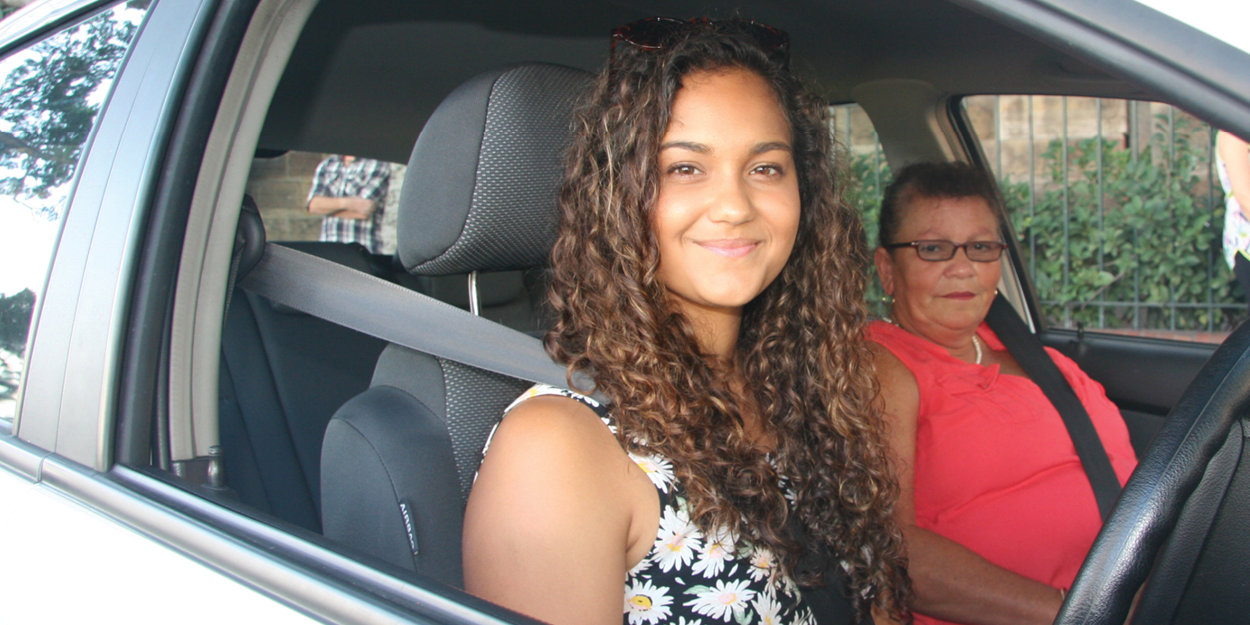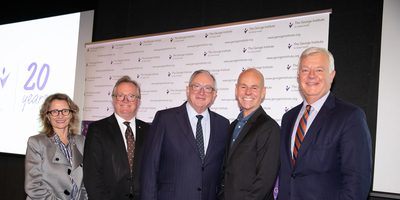
20 years of reducing injury
Injury prevention research has always been part of The George Institute’s DNA. Head of the School of Public Health and Community Medicine at UNSW Sydney, Professor Rebecca Ivers was a key figure in the program’s early development.
Rebecca has dedicated her professional life to the prevention and management of injury. As Director of The George Institute’s Injury Prevention Research Program for 12 years, she was one of its earliest staff members, intimately involved in expanding the scope and depth of injury work.
“I have always been interested in injury prevention, which I think was and still is a really unrepresented area in research,” she says. “I ended up doing my PhD in injury, drawing on some data from one of Robyn’s [Institute co-founder] studies. She gave me a job soon after they moved to Australia from New Zealand to set up the Institute.”
Unlike much of the other work done at the Institute, injury prevention involves generating epidemiological evidence and then working across multiple sectors, including governments and other agencies, to develop, implement and enforce laws and policies to reduce trauma.
“If you're a cardiovascular researcher, your intervention might be a blood pressure tablet and you study the effect of people taking different types of pills,” Rebecca explains. “If you are working in road injury, you can't do a randomised controlled trial of motorcycle helmets. Instead, your intervention might be a seat belt law or a particular type of child car seat, which requires support from the highest levels of government to implement.”
Rebecca has been involved in numerous injury research successes at the Institute over the years. In 2002, she led a large study of 20,000 young drivers to identify risk-taking behaviours in young drivers. The findings revealed numerous factors influenced crash risk, including risky behavior, driving at night, mental health and driving experience.
"We took the research to government and lobbied them about stronger restrictions on young drivers as part of the licensing program,” she recalls. “Likewise, we also did a major study examining the risk factors for crashes in heavy vehicles, as fatigue in long distance truck drivers is of huge concern. That second study was then used to influence government policy on the regulation of safe hours of work for these drivers."
Like chronic diseases, injuries tend to disproportionately affect the most underserved populations globally. In Australia, Aboriginal and Torres Strait Islander children under the age of four are four times more likely to die from a road-related injury and twice as likely to suffer a serious road-related injury than other Australian children. Mortality rates for Aboriginal children from injury-related causes are almost five times higher and hospitalisation rates two times higher than for non-Aboriginal children.
“If we're going to really reduce inequities in Aboriginal health, we have to acknowledge the role that colonisation, whiteness and power imbalances in policy and health services play,” Rebecca says. “The George Institute has grown a strong and vibrant Aboriginal and Torres Strait Islander health program led by Aboriginal and Torres Strait Islander people, and this leadership will be key to addressing inequities in injury and other conditions.”
From projects to strengthening child safety in cars and helping young Aboriginal and Torres Strait Islander people obtain driver licenses, to improving access to burns treatment and preventing falls, the Institute’s injury program has expanded from an Australian focus to an international one with ambitious but practical objectives.
“At the moment we're recruiting 40,000 people from low- and middle-income countries into a study looking at which factors make people survive once they've been admitted to hospital after a traumatic fracture,” she says. “We’re trying to identify what are the things that kill you and what makes you survive once you get to hospital.”
Now a leading global injury research centre and a designated WHO Collaborating Centre in Injury Prevention and Trauma Care, The George Institute is carrying out over 30 injury-related projects in Australia, India, Bangladesh, China, Vietnam, Uganda and South Africa, including projects relating to reducing drowning and snakebite, preventing falls and burns, improving management of hip fracture patients, and reducing road crash injuries.
“The George Institute has always been a very intensive incubator for really high-quality, pragmatic research that's focused on impact,” Rebecca says. “That’s extremely important when it comes to injury prevention, because to really reduce injuries, you have to move beyond just publishing great research – you have to work outside the academic world if you’re really going to make a difference.”
Celebrating 20 years: Rebecca's top moments
- Aboriginal leadership: "The Aboriginal and Torres Strait Islander research program at The George Institute is led by Aboriginal and Torres Strait Islander researchers who set policies and practices. They oversee all Aboriginal and Torres Strait Islander health research undertaken."
- Working with governments: “We had great success working with governments to understand what their priorities are, conducting the research and then identifying changes that could be put into policy and practice.”
- Injury research program: "We built a really strong and consistent injury program at The George Institute with such a great team. I'm delighted that injury research now takes place across all its offices and in so many different locations globally."


